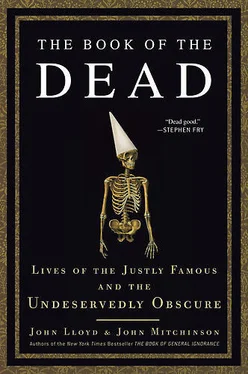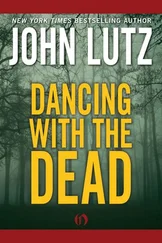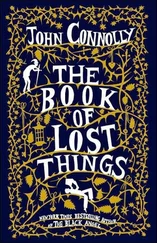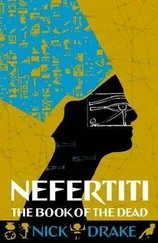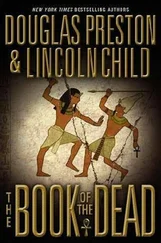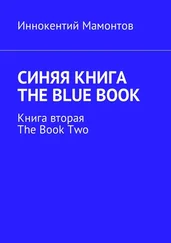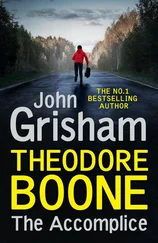If this gives the impression that Temüjin was some sort of Mongol version of the Dalai Lama, then it would be inaccurate. He was fair but he was implacable. When, to establish his supremacy, Temüjin eventually had to impose his will on his original allies, the Kerait, he first offered them the chance to surrender, and when they refused, he crushed them in a series of great battles. The Kerait were by then led by Jamuga, son of Toghrul (and Temüjin’s own blood brother and boyhood friend). When the vanquished Jamuga asked if he could meet his end without his blood being spilled, Temüjin graciously had him wrapped in two felt blankets and then beaten and asphyxiated to death.
By 1206 Temüjin had achieved the unthinkable, linking all Mongol tribes for the first time into a single league. At the age of forty-two, having outmaneuvered or defeated his rivals, he was declared Genghis (or more accurately Chinggis) Khan. Many suggestions have been put forward for the precise meaning of this name—Lord of the Oceans, Universal Leader, Precious Warrior, Spirit of Light, True Khan—but the general idea is unmistakable: He was the khan of khans. No other Mongol leader ever bore this title.
You cannot operate an effective legal system without writing, so Genghis Khan borrowed the alphabet of a nearby people, the Uighur, to create standardized written Mongolian. (Uighur derives from Aramaic, the language spoken by Jesus, though Aramaic, ironically, never developed a written script of its own.) He also instituted a rapid communication system known as the yam. This operated like an Asian Pony Express, consisting of a chain of manned refueling stages at 140-mile intervals all over the empire. To run a yam station was a well-rewarded, high-status job. A messenger would arrive, hand his package on to a fresh horseman, and then rest and recuperate. In this way, a message could travel more than two hundred miles in a single day, outstripping the fastest army. The service was safe and secure; for merchants wanting to move goods or information it was also free. The yam was to turn the Silk Road into the medieval world’s most important highway.
None of this would have been possible without the superiority of Mongolian troops. Highly skilled, mobile, and disciplined, Mongolian mounted archers were self-contained fighting units. Protected by light helmets and breastplates made of leather or iron plates, they carried two powerful, small composite bows made from horn, wood, and sinew, each as powerful as an English longbow but much quicker to use and reload. Their quivers contained a selection of arrows for different jobs: armor piercers, blunt “stun” arrows, even arrows that whistled, which were used for sending messages. They also carried a small ax or mace. Each man had a saddlebag with his own food rations, rope, and sharpening stone, and a string of five or six spare horses. This meant there was no baggage train or camp followers to slow things down. A Mongol army could travel well over a hundred miles a day—they ate on the move and even stood up in the saddle to evacuate themselves while galloping along.
Genghis was a superb military planner. Each campaign was mapped out in advance and extensive use was made of spies and field intelligence. The troop structure was based on the decimal system: squads (ten men), companies (one hundred), regiments (one thousand), and divisions (ten thousand). Commanders controlled regiments and were given a high degree of independence.
A Mongol attack was devastating and virtually impossible for a traditional army to withstand. Appearing at terrifying velocity, the cavalry suddenly split into three or more columns and mounted a multipronged assault. The tactics required remarkable horsemanship and the troops were rigorously trained. This was done through hunting exercises. A posse of horsemen would set out onto the steppe until game was sighted, surround the animals at speed and at a distance, and then gradually close the circle, making sure nothing escaped.
The Mongols usually tried to ambush an army and destroy it in the field rather than besiege a major city, but when the time came they were both ruthless and highly original. Innovative siege warfare was another of Genghis Khan’s great skills. First, small undefended local towns would be taken and the refugees driven toward the city, putting pressure on living space and food resources. Next, rivers were diverted to cut off the water supply. If necessary, siege engines were then deployed, built on-site from local materials by prisoners of war. Mongol catapults were particularly effective, sometimes firing the bodies of plague victims over the city walls—one of earliest examples of germ warfare. Once a city was taken, its leaders were captured and executed to remove the focus for any future rebellion.
Brutal though this sounds, even Mongol siege techniques bore witness to the sense of fairness that Genghis Khan had enshrined in the yassa. Arriving in front of a doomed city, the Mongol commander would issue the order to surrender from a white tent: If the city complied, all would be spared. On the second day, he would use a red tent: If the city surrendered, the men would all be killed, but the rest would be spared. On the third day, he would use a black tent. After that, no quarter was given.
Genghis Khan’s achievements can hardly be overstated. By the time he died (still fighting, in northwestern China in 1227), he had transformed a haphazard patchwork of squabbling goatherds into an empire of unparalleled military strength, with a language, a constitution, and an international postal service. In Mongolia today, he is still considered a national hero.
Though he was said to have more than five hundred concubines (and untold numbers of bastards), Genghis Khan stayed loyal all his life to his original wife, Börte, and their four legitimate sons. He had appointed his third son, Ogedei, as his successor, and for fifteen years things went well. Under Ogedei’s leadership the Mongols put down a rebellion in Korea and demolished the Russians, Ukrainians, Poles, and Hungarians. By 1241 the Golden Horde had reached the gates of Vienna. It felt like the end of civilization. Then, in what seemed to be a miracle, the Mongols mysteriously melted away. They went home to Mongolia; a quiriltai had been called to choose a successor to Ogedei, who had died in a binge-drinking spree after a hunting expedition. From then on the Mongols became increasingly directionless and needlessly destructive. During the sacking of Baghdad in 1258, priceless Muslim scholarship, centuries old, was burned and thrown in the Tigris. The Mongol Empire eventually disappeared and left little trace on the cultures it had conquered, but this only bears testimony to the strength of Genghis Khan’s leadership: He was irreplaceable.
As was the custom among Mongols, he was buried in an unmarked grave. His four legitimate sons were so paranoid about keeping its location secret (to avoid its being despoiled) that their men slaughtered every single person the funeral cortege came across—Marco Polo later claimed this exceeded twenty thousand people. Leaving nothing to chance, they then got soldiers to execute the slaves who had excavated the tomb, and then had those soldiers executed in turn. To find it again themselves, they sacrificed a suckling camel in front of its mother and buried it in their father’s tomb. Camels have long memories, so once a year they released the mother camel, which unerringly returned to the precise position it had last seen its offspring. The only flaw in the plan was that when the old mother camel finally died, all knowledge of the location was lost. Despite many false claims, Genghis Khan’s grave has never been found.
As for his permanent legacy, it stretches far beyond the boundaries of Mongolia. Recent genetic studies have found that 8 percent of the current male population of central Asia are direct descendants of Genghis Khan.
Читать дальше
